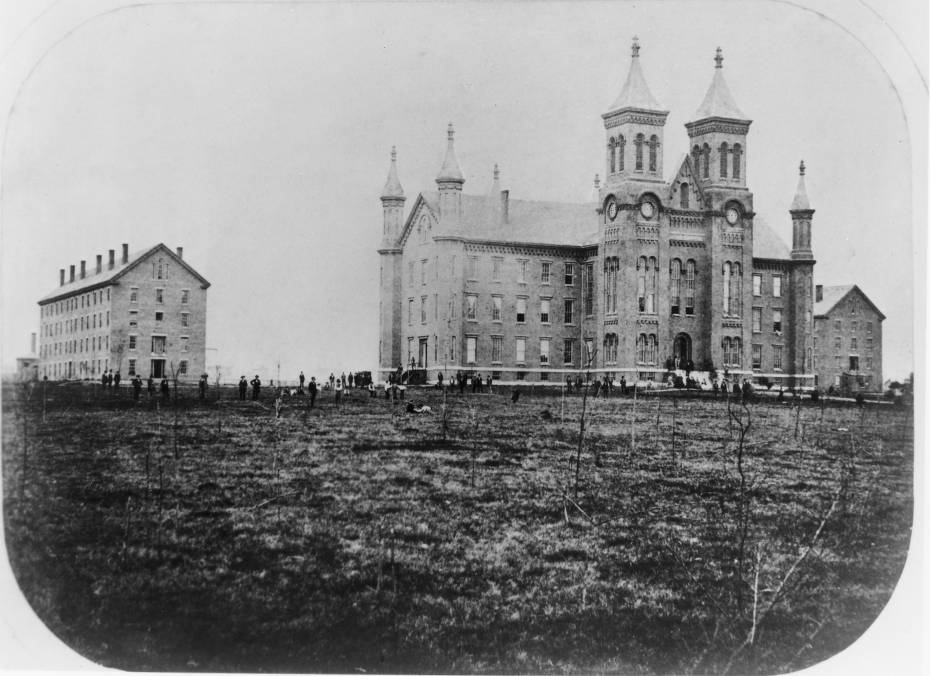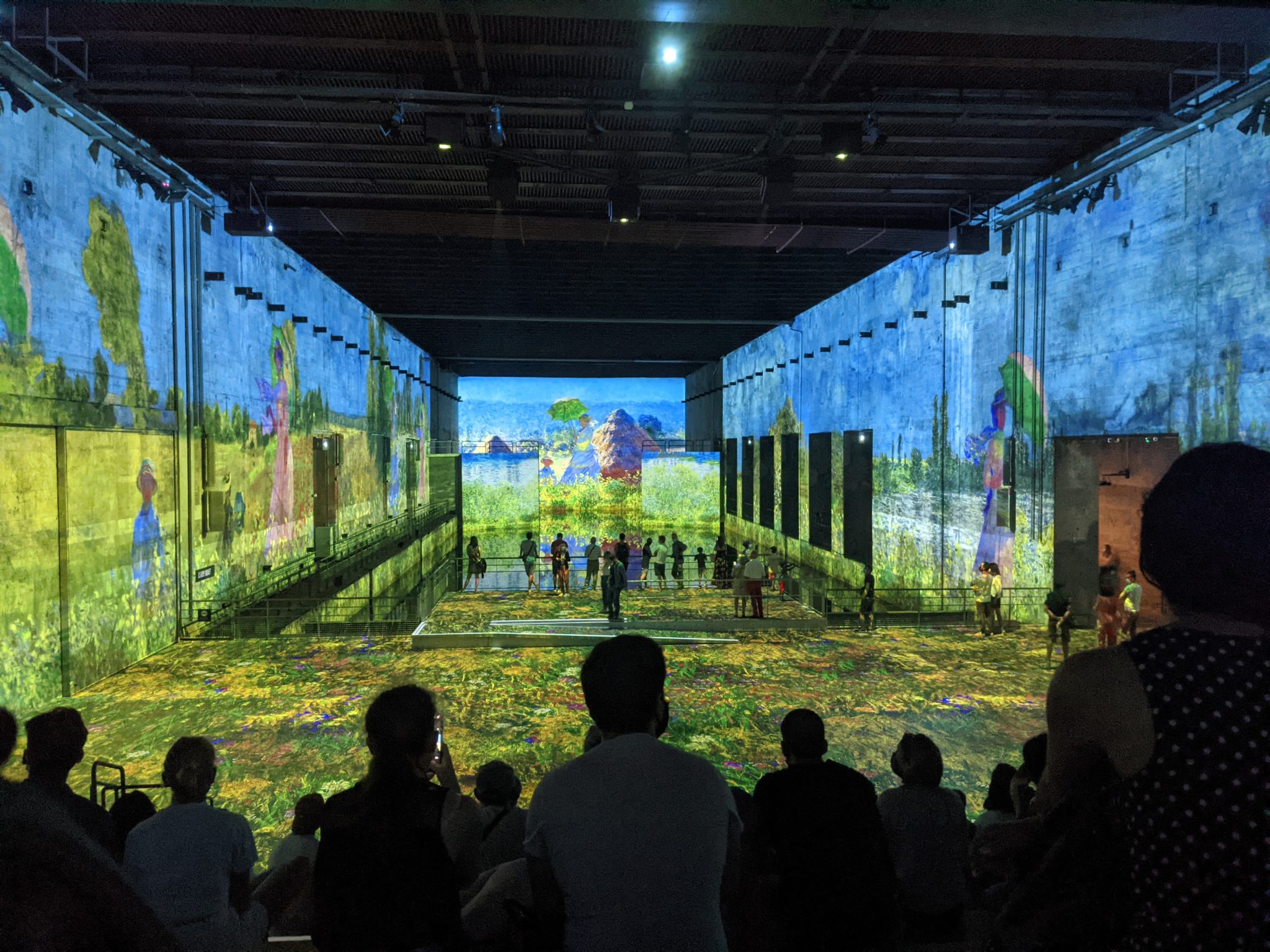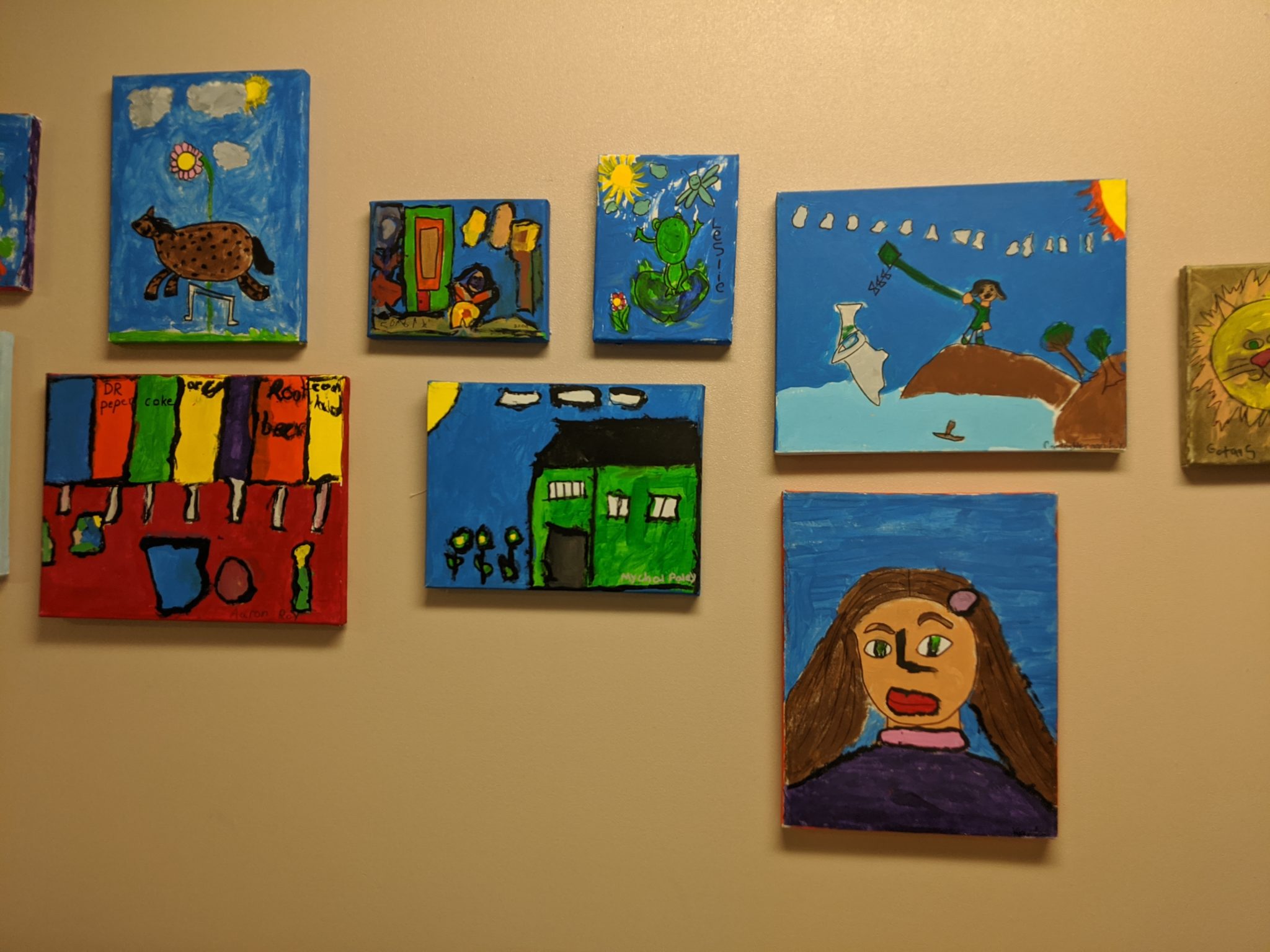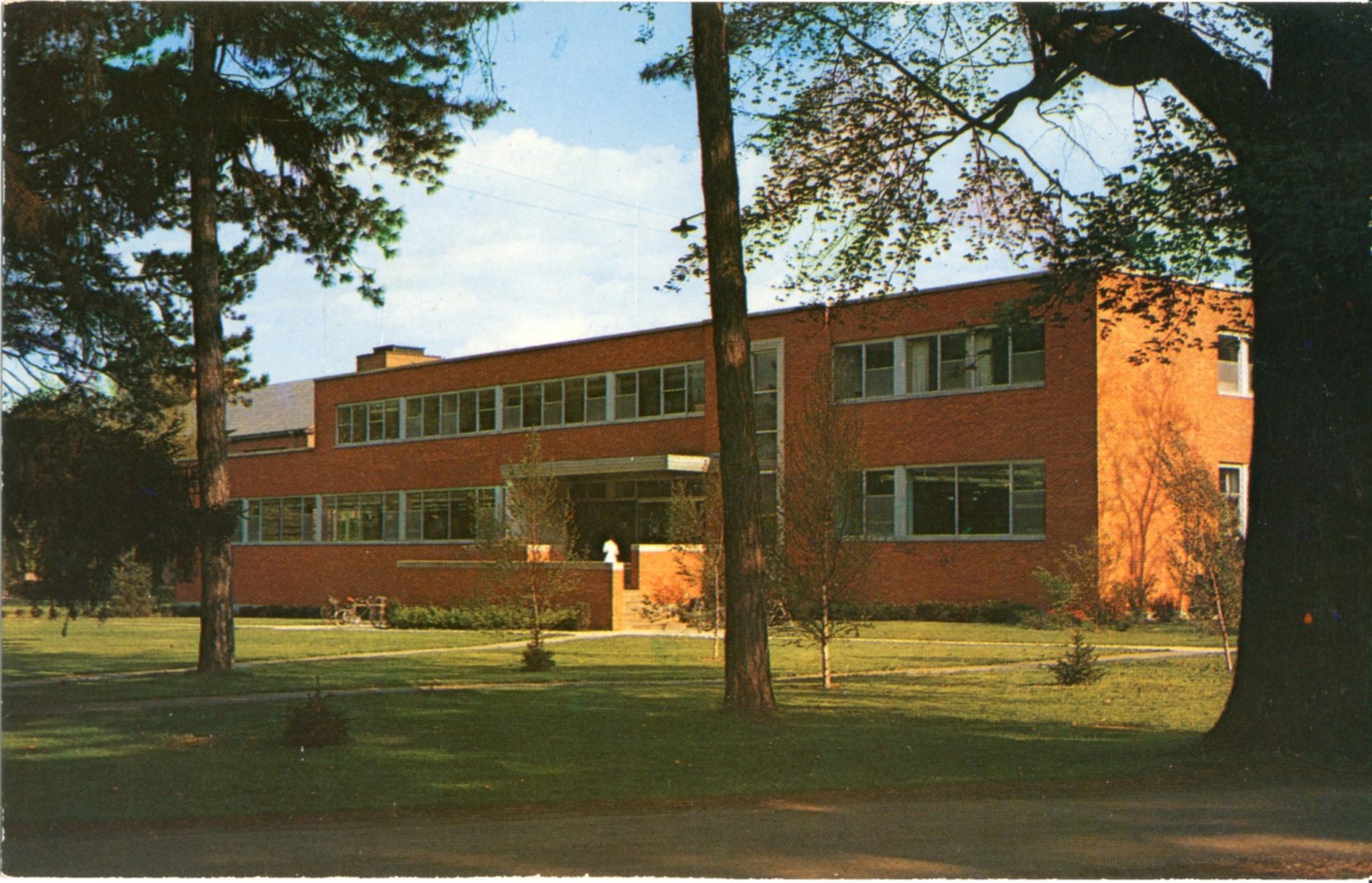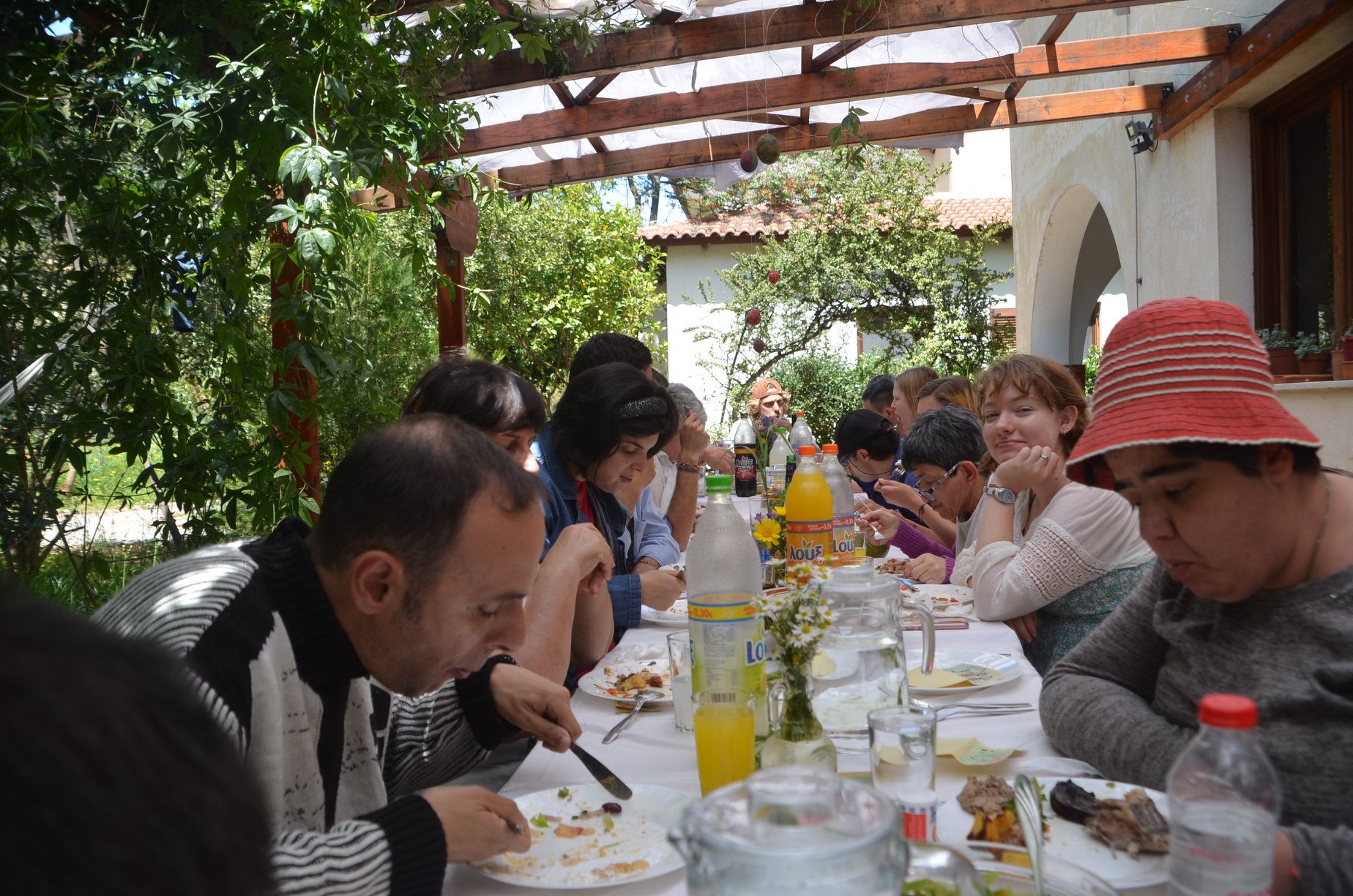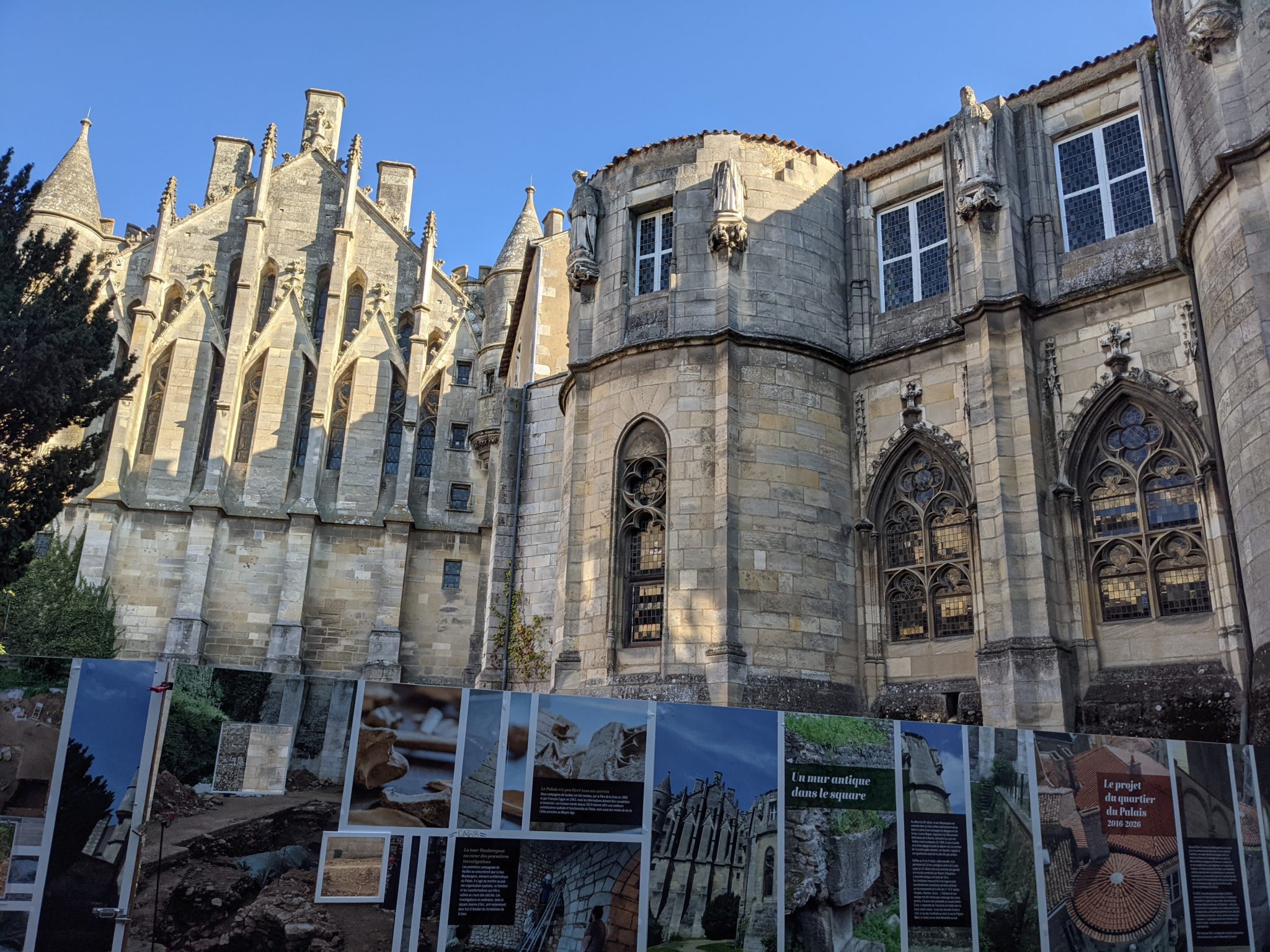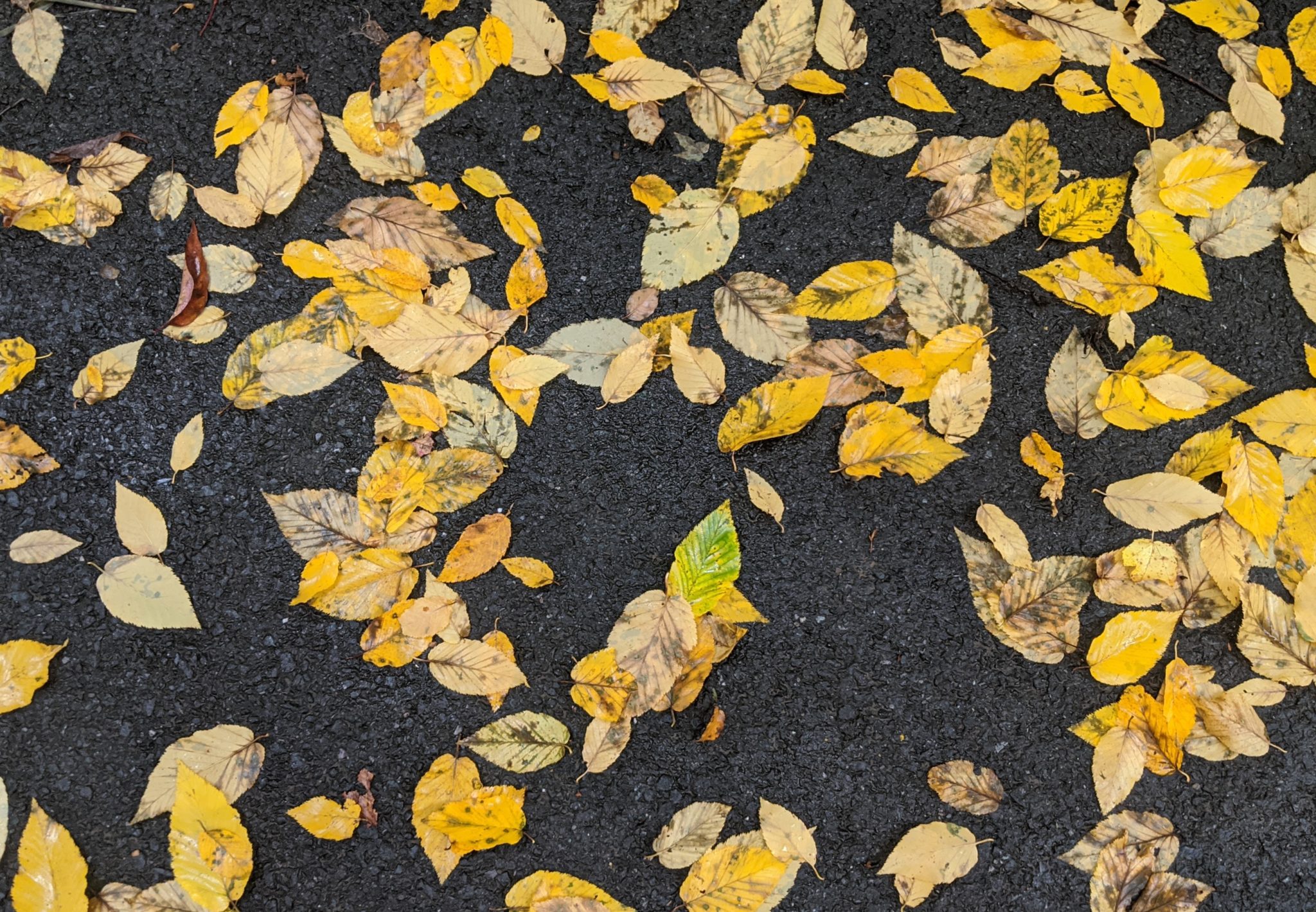Delaney Schlesinger-Devlin ’22 at El Papalote Inclusive Child Care Center in El Paso, TX
Feb 03, 2021Paso Del Norte Children’s Developmental Center in El Paso, Texas has a mission “to help children with disabilities reach their fullest potential by providing comprehensive therapeutic, education, and childcare services.” The center does this by providing different services through the Early Childhood Intervention program and private therapists. I am a part of Paso Del Norte’s El Papalote, an inclusive child care center that allows children with special needs to get in-class therapies and modeled behaviors from peers without special needs. Inclusive classrooms also allow students without special needs to see their peers with special needs as a part of their classroom and friend group, hopefully lowering prejudices as they get older.
I am helping fill in for the Assistant Director. Part of this role is to record information for grants, submit funding requests for families, and help ensure the day-to-day operations of the center go smoothly. 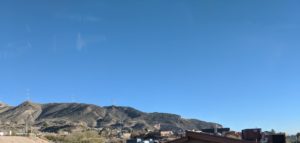
As I am learning about different aspects of running a child care center, I have been allowed to shadow different people and processes at the center. For example, I was able to be a part of a hiring team for a teacher. This interview process allowed me to learn about what specific qualities the center was looking for in a teacher and how to conduct a formal interview. Another example is with a music therapy group the center runs. I participated by singing songs and observing how the therapist promotes socialization between the children. In addition, the therapist was able to give me advice on different certification and educational programs.
All of my shadowing opportunities, as well as my day-to-day responsibilities, have shown me that I want to have an interactive part in people’s lives. I have enjoyed seeing the children every day and watching their progress in different areas. In addition, I have a better understanding of the administrative side of the center. This impacts my self-designed degree because I now know I will have to implement research into actual practice in settings such as El Papalote.
For more information about Paso Del Norte Children’s Developmental Center or El Papalote, please visit https://pdnchildrens.org/.
What?! He’s not just writing textbooks: Quinn Ritzhaupt ’23 as an Archivist at the OKL
Jun 21, 2020Legend holds that an Antiochian can be parachuted anywhere, and they’ll find a job, a place to live, and some friends within three days…
The Co-Op Interview Project provides a chance for students to discuss their co-op experiences and explore how current Antiochians shape the world. This is a peer-to-peer project where students can reflect on the things they learned, how their participation has effected them, and where they want to go next. All of this not only helps showcase the amazing work that Antiochians are doing, but also serves as a time-capsule to look back on.
Watch how Ritzhaupt took on their co-op
More Than A Home: Delaney Schlesinger-Devlin ’22 at Estia Agios Nikolaos in Galaxidi, Greece
Oct 14, 2019“Estia Agios Nikolaos is the only community in Greece where adults with special needs live, work and spend their free time together with their caregivers.”
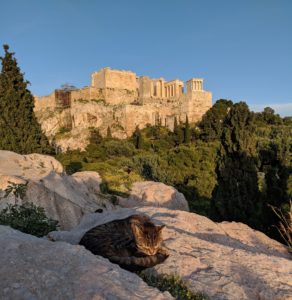
When I started my first year at Antioch I knew I wanted to study psychology, but I did not know what type of psychology I would pursue or how. Going on this first co-op, I hoped to gain insight into holistic approaches in psychology, as well as gain experience supporting people with special needs. Estia Agios Nikolaos provided a chance for me to do this in addition to experiencing Greek culture in an almost immersive way.
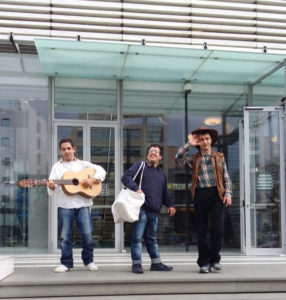
Jam session in Athens
I spent my co-op volunteering at the Irini House, which means Peace House. We lovingly called it the Second House as it is the second house at the entrance to Estia. My daily routine started at 7:15 in the morning. I helped to prepare breakfast for the residents and other volunteers in my house. To signal the start of all our meals, everyone joined hands and said, “kalí órexi,” or bon appetit. To end all our meals, we said, “euxaristoume,” or thank you. It’s a positive way to start and end all our meals.
After we eat together and clean up, we head to the workshops. There are three different workshops offered: pottery, jewelry, and gardening. About six to eight residents go to each workshop and participate in different activities.

Bazaar in Galaxidi
I spent about half my time in the jewelry workshop and the other half in the garden. In the jewelry workshop, I would knit, sew, and support the residents with their own projects, like making necklaces or dolls. There were always colorful arts and crafts around us and the room was always filled with Greek music, most of which I did not understand. I also practiced my Greek language skills with the native Greek speakers while they practiced their English with me.
I especially liked the garden workshop because we were outside moving around. This workshop helps Estia’s small farm and garden by weeding, picking fruits, planting seeds, and occasionally baking bread for all the houses. Part of Estia’s mission statement is that “each person is unique and can be helped to develop his or her unique capabilities in a nurturing environment via creative work, artistic stimuli and direct interaction with nature.” All of the workshops seek to engage everyone in a comfortable way that also produces something that the community can be proud of and enjoy.
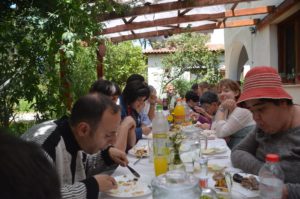
Easter Lunch
After the workshops are finished, each house gathers to eat lunch. Most days there was a traditional Greek dish served. It was like having a Greek mother cook most of my meals—a truly immersive dining experience!
After lunch is mesimeri, where all of Greece becomes quieter and most people close their business from 1 to 3 in the afternoon. In Estia, this is when most residents took naps or spent quiet time in their rooms. Volunteers could also spend this time taking naps, but on nice days we would take walks to the picturesque town of Galaxidi and see the beach and the port. Galaxidi is a sleepy and traditional small Greek town. When it gets warmer, the beaches and surrounding areas begin to attract large amounts of tourism. The town is supportive of Estia and its mission. Most people in the town even know some of the residents and volunteers because of the weekend walks into town.

Lunch in the Sun
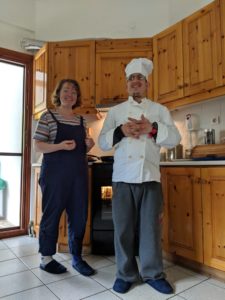
Cooking Champs!
After the mesimeri is Gliko, or dessert. Each house begins to gather, wake up, and prepare snacks for the afternoon. After this, an evening activity takes place, like arts and crafts, storytelling, music, baking, or meditation. Some residents and volunteers will go to these activities while others will stay in the house to prepare dinner, play board games, go on walks, or just hang out. I have enjoyed the baking activity and the relaxation activities the most so far. Each are good ways to see people who are not in your daily workshop or house.

When it is time for dinner the activities come to an end and each house again gathers to eat. After dinner, people in our house usually relax and play music. This house has a piano, guitar, and a recorder flute that all combine to create some very interesting pieces of music. These music sessions then lead into kýklos, or circle. This is the evening circle where everyone begins to prepare their minds for bed. Our house would make the area dark and peaceful, and light a candle in the center of the room. It is a very calm time where we sing a song together, reflect on our day, and wish each other a good night.
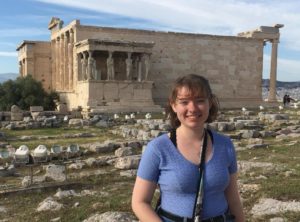
Athena’s Temple
Here at Estia there is not an institutional division of residents and caretakers. Living at Estia means making a home with people who have different needs, are from different countries, and have different cultures. It means living in a community where you are supported and you support others. I believe that Estia meets its mission statement because it strives to make a safe place for all who come. Everyone is involved and connected to the lives of other community members. Estia has also made me think about practicing psychology in a community, not just an institution. Seeing the freedom and autonomy the residents have lets me see a different type of care people can have. Being at Estia has helped me explore other holistic approaches to psychology.
Seasoning French Language with Cary Campbell, Professor of French Language and Culture at Antioch College
Jun 22, 2019Instructor of French Dr. Cary Campbell comes to Antioch College most recently from the University of Pittsburgh where he served for two years as their Coordinator of French Language programs. He also trained there both as a linguist and as a literary scholar. From his undergraduate training both in Linguistics and French, he developed interests in language pedagogy, syntax, Romantic and Francophone narrative fiction. They eventually culminated in his MA in literature and linguistics, and in his PhD in African literature with a dissertation focusing on the construction of national identity in recent novels from Côte d’Ivoire. Today, he is broadening his dissertation topic into a book project comparing literary representations of national identity across a range of African Francophone countries.
While pursuing this education, Dr. Campbell kept a busy schedule teaching all levels of French, as well as courses in phonology, approaches to literature, the history of the French Atlantic, the African novel of French expression, and Anticolonialism. His fifteen years of teaching experience has also included collaboration on several online French textbooks and interactive video-based French courses, earning him Contributing Author credits on Carnegie Mellon’s award winning Open Learning Initiative French Online program. Dr. Campbell has a long history of applying proficiency-based and communicative methods in the classroom and in infusing all his classes, from elementary French to advanced literature, with the cultural products, practices and perspectives he developed a love for during his overseas experiences in France and in Côte d’Ivoire.
Hear more from Cary
Three Things to Learn at Camphill Copake: Delaney Schlesinger-Devlin ’22 at Camphill Copake in Copake, New York
Mar 18, 2019What do leaves dipped in wax, seed germination, and eurythmy have in common?
I learned about it and did it at Camphill Copake!
Camphill Copake is an Intentional Community in upstate New York that serves adults with special needs. They are called Villagers, as this village is their home! Camphill runs with the help of short and long-term volunteers, heads of houses, and some local outside support. Everyone lives, works, eats, and celebrates together. There are many festivals and internal actives that keeps everyone busy. There are about 250 people living in the village in over 20 houses. While this is a lot of people, Camphill has over 600- acers of farmland, woods, and residual area, so there is room to spread out.
One of my favorite actives to do has been dipping fall leaves in bees wax. My house and I dipped over 50 leaves to decorate our space for fall. And we only had one burned finger! Here there is a mission to live in balance with seasonal change. That means seasonal activities like this are a must. And, with this community being over 50 years old, there are a lot of beautiful old maple trees to get red and yellow leaves from. These are the same trees that this winter, the Estate Workshop will harvest maple syrup from!
This is a working community, so everyone has one or two work placements they are a part of. My morning work is in the Coffee Shop. The Coffee Shop is a hot spot during tea time, as many people come in to get sweet treats, look in the gift shop or library, and stay warm as the days get colder. With the new restrictions for Covid-19, the Coffee Shop is only open to people living in the village. Some of the Villagers here are not able to wear masks so the Coffee Shop is a way for them to safely come to a coffee shop.
My afternoon workshop is in Turtle Tree Seed. Turtle Tree Seed sells and produces open-pollinated, Demeter certified Biodynamic, organic vegetable, flower and herb seeds. This workshop has grown over the years and now has hundreds of strains of seeds that would not exist without the seed shop. One of the Villagers I work with can name almost every time of tomato seed we have! And there are more strands than I can count. Most of the work I do here is to catalogue and harvest seeds from plants grown in the Vegetable Garden or Healing Plant Garden. We sow the seeds in the ground and watch them grow over the year to be harvested months later. This is also where I have learned and even process seeds for germination. While I don’t think I will ever need to know about seed germination in the future, it is an interesting thing to understand. Find out more about this workshop here: https://turtletreeseed.org/
Finally, eurythmy. What is eurythmy? For some it is a physical movement therapy. For others it is a performative movement. For me, it is a fun movement that I have enjoyed participating in before we eat dinner. Eurythmy is actually considered a Steiner movement art that follows anthroposophic philosophy. Most houses do a version of spoken eurythmy. This is when important words, like “Halleluiah”, are broken up into sounds that have corresponding movements. Some households in Camphill perform a different word ever week before sitting down to eat dinner. For everyone it is a good way to do premeal movement to the best of their own ability.
While there are many different mission statements Camphill believes in and supports, the one that has stuck out to me the most is “shared living at Camphill Village brings a new future into focus; a future that is about recognizing the potential of everyone and the benefits of a life lived with care and concern for others.” All of the activities and workshops I have described above are done with people of all abilities. We work in groups and teams to help run this community. We find things that people are both able to do, but also accel at doing. Everyone participates and cares for each other is every way one could think is possible.
To find out more, or even to come and volunteer, check out their website at:
https://camphillstore.com/


